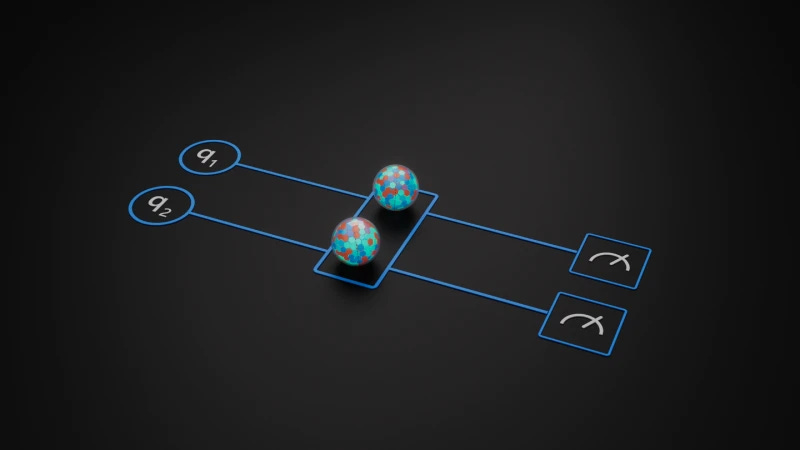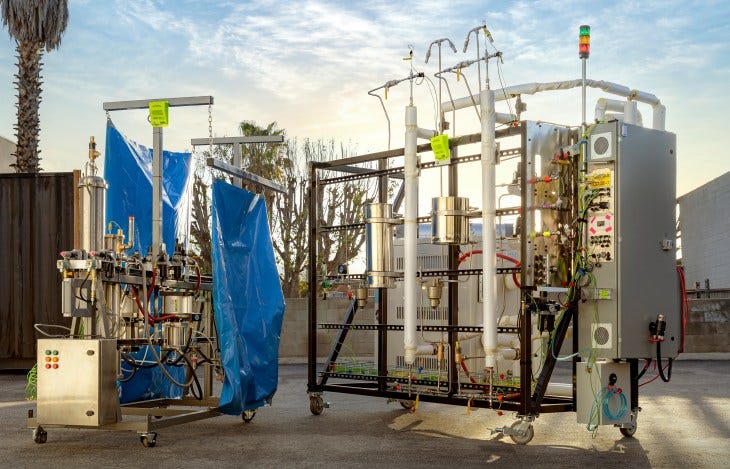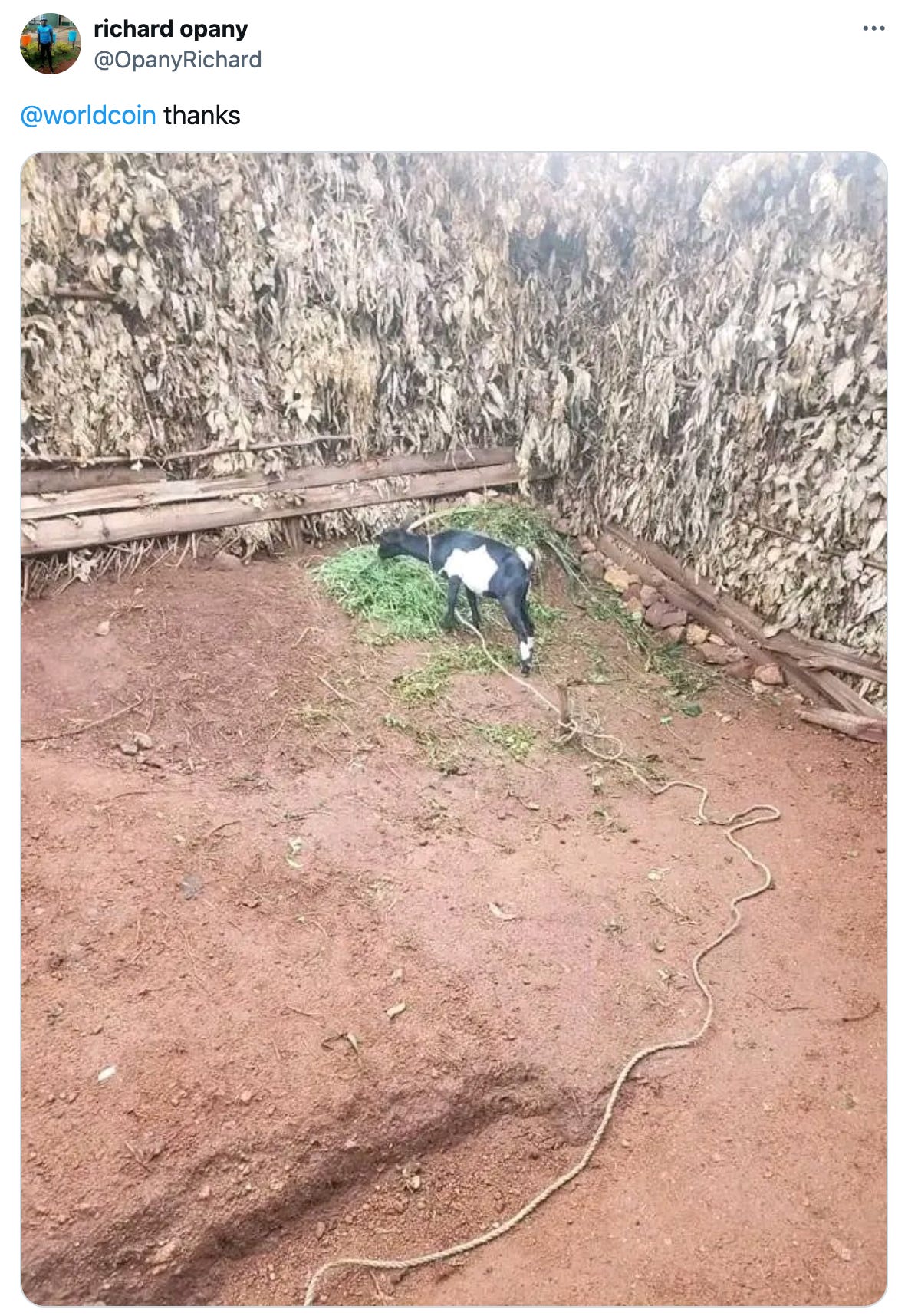

Weekly Dose of Optimism #88
source link: https://www.notboring.co/p/weekly-dose-of-optimism-88
Go to the source link to view the article. You can view the picture content, updated content and better typesetting reading experience. If the link is broken, please click the button below to view the snapshot at that time.
Weekly Dose of Optimism #88
Quantum Leaps, Terraform, Parkinson's GLP-1, Quarterhorse Mk 1, Eight Sleep, Kalshi, Crypto Goats, Hardest Geezer
Hi friends 👋,
Happy Friday and welcome back to our 88th Weekly Dose of Optimism.
Another jammed packed week for the optimists. I am going to combine a couple of this week’s stories to paint a future for you. The year is 2044 — synthetic natural gas pulled from our skies cleanly and cheaply powers unimaginably powerful quantum computing centers, which are solving complex drug discovery problems to produce tenth generation GLP-1s that can basically treat any disease.
Sounds like SciFi, right? Answer that after reading this week’s Weekly Dose.
Let’s get to it.
(1) How Microsoft and Quantinuum achieved reliable quantum computing
From Microsoft
By applying an innovative qubit-virtualization system to ion-trap hardware, Microsoft and Quantinuum were able to create four highly reliable logical qubits from only 30 physical qubits, while demonstrating an 800x improvement in error rate.
Microsoft announced a significant advancement in quantum computing, achieving an 800x improvement in the logical error rate of qubits. Reducing the error rate in quantum computing is crucial because it makes quantum computers more accurate and reliable, allowing them to perform complex calculations without mistakes. Reducing the error rate is the central challenge in getting useful, and ultimately commercializable, quantum computing.
Microsoft's integrated its qubit-virtualization system with Quantinuum's hardware, resulting in highly reliable logical qubits created from a smaller number of physical qubits. The enhanced reliability, demonstrated through successful error diagnostics and corrections, meets critical criteria for reliable quantum computing and marks a transition towards fault-tolerant quantum computers. Using the combined techniques — Microsoft’s visualization scheme and Quantinuum’s hardware — the researchers were able to run thousands of experiments with virtually no errors. Boom.
Quantum is one of those fields where the work is so complex that its sometime hard to grok its importance. But imagine a world in which we have computers that are millions to billions of times more powerful than the supercomputers we have today. And imagine aiming those computers towards really any computational challenge — drug discovery, material science, cryptography, or, say, generative AI. If and when we crack this, the world is going to be a much different — and better — place.
(2) Terraform Industries converts electricity and air into synthetic natural gas for the first time
Aria Alamalhodaei for Tech Crunch
Instead of reducing humanity’s dependence on hydrocarbons — which is impossible or undesirable or both, depending on who you ask — Terraform Industries’ solution is to produce this resource, using electricity and air, via a system it calls the Terraformer. Today, the startup is announcing that it has commissioned a demonstrator Terraformer and produced synthetic natural gas for the first time.
Last week, we profiled Terraform’s founder Casey Handmer and, as if on cue, his company announced that it’s produced synthetic natural gas for the first time. The company’s Terraformer is designed to create synthetic natural gas using electricity and air, providing a renewable alternative to traditional hydrocarbons. The machine is made up of three parts:
Electrolyzer: Uses solar power to split water into hydrogen and oxygen, essentially creating hydrogen gas.
Direct Air Capture: Extracts carbon dioxide (CO2) from the air, providing the carbon needed to form natural gas.
Chemical Reactor: The hydrogen from the electrolyzer and the CO2 from the air capture system are combined in this reactor, producing synthetic natural gas.
And voilà, we have synthetic natural gas pulled from sunlight and air. The team has a long way to go in scaling up its systems and getting costs down, but it’s a major step step for them towards generating abundant, clean energy pulled directly from the skies.
(3) Trial of Lixisenatide in Early Parkinson’s Disease
From the New England Journal of Medicine
Lixisenatide, a glucagon-like peptide-1 receptor agonist used for the treatment of diabetes, has shown neuroprotective properties in a mouse model of Parkinson’s disease.
Man, these GLP-1s are something else, huh? Lose weight, curb cravings, manage diabetes, reduce heart disease…and now, according to new research published this week, slow Parkinson’s.
Over a year long study, the group taking lixisenatide showed slight improvement (−0.04 points change), whereas the placebo group worsened (3.04 points increase) on tests designed to measure motor disability changes. That’s a pretty big deal! Parkinson’s is the second most prevalent neurodegenerative disease in the U.S. behind Alzheimer’s and over half a million people have been diagnosed with it. A drug that can slow and delay the onset of Parkinson’s symptoms should have a major quality of life impact for those patients.
GLP-1s, like lixisenatide, may be effective in treating Parkinson's and other neurodegenerative diseases by addressing insulin resistance in the brain and interacting with neuronal proteins, potentially protecting neurons and slowing disease progression. Just another day at the office for GLP-1s!
(4) Hermeus Unveils Quarterhorse Mk 1
Big week for fast planes! On Monday, Packy wrote about Astro Mechanica, which plans to use its Turboelectric Adaptive Engine to make planes that fly Mach 3 and take down Boeing.
On Saturday, another aerospace startup, Hermeus unveiled its hypersonic Quarterhorse Mk 1, which it designed, built, and flew within a year. It also announced that it would be dropping the Mk 2, the world’s first high-Mach autonomous aircraft, next Summer. “One aircraft per year.” Watch the video. This thing is awesome.
We like planes that go fast here. It was a good week for us.
From Eight Sleep
This is not a sponsored placement, but given that the Not Boring community probably has a higher density of Eight Sleep users than any other group in the world, we thought we’d share the company’s latest findings on sleep improvement.
The study by Eight Sleep demonstrated that using the Pod improved sleep quality, increased deep, light, and REM sleep stages, and enhanced cardiovascular recovery, evidenced by a decrease in heart rate and an increase in heart rate variability. There was a about a ~20% increase in deep and light sleep while the Pod was on. Cardiovascular recovery was also positively impacted by the Pod, with a 2% decrease in average heart rate and a 7% increase in heart rate variability.
To be honest, it’s sometimes hard tough to trust these company-backed scientific studies that are not part of a formal FDA process, even when they’re peer-reviewed. But, at face value, the results confirm what basically any Eight Sleep customer will happily chat your ear off about. The Pod works! This looks like a case where the actual data backs up the anecdata.
(6) Kalshi Onboards Its First Dedicated Institutional Market Maker
Kalshi, the first federally regulated exchange dedicated to trading on event outcomes, announced today their first dedicated institutional market marker in the ecosystem, Susquehanna Government Products, LLLP, a member of the Susquehanna International Group of Companies (“SIG”).
Six stories! Kalshi, the prediction market on which you can pretty much wager on any large event, announced SIG as its (and the ecosystem at large’s) first dedicated market maker. This is a big deal for Kalshi, not only because SIG lends some level of credibility, but also because it provides much needed liquidity and price stability for what can be pretty volatile markets. The role of the market maker is to ensure that there is always a counterparty available for traders wanting to enter or exit positions. This is particularly important for nascent prediction markets like Kalshi where liquidity can otherwise be scarce.
Now a skeptic may look at Kalshi and label it as just another way for gamblers to get their fix on a new set of alternative contracts, but prediction markets — be it the stock market or Kalshi — generally lead to positive outcomes for society. Prediction markets lead to better information aggregation and discovery, more efficient risk management, more responsive governance, amongst other things.
If you believe David Deutsch’s Principle of Optimism — “All evils are caused by insufficient knowledge.” — then prediction markets that harness and publish collective knowledge are a very optimistic thing indeed.
I have yet to find a more reliable and legible outcome indicator than Kalshi — on everything from interest rates and political outcomes to Telsa production volumes and Taylor Swift album predictions.
No sports yet on Kalshi — I am sure that will change eventually — but until then, you’ll have to download the sports book app of your choice to place your Caitlin Clark prop bets this weekend.
Bonus: Packy here, popping in to tell you about something very fun happening on the internet. There’s a guy in Kenya named Richard Opany who tweeted “@worldcoin thanks” with a picture of a goat on April 1st. He put the @worldcoin first, the ultimate visibility killer on twitter, just wanted to say thanks.
Somehow, people found the tweet, realized that he meant that he used the Worldcoin he received for setting up his account to buy a goat, and asked how much a goat cost. He said $50. Leighton Cusack asked for his wallet address, sent him $100, and asked him to name the two goats “higher” and “enjoy/based.” He did.
Now lots of people are sending Richard $50 or $100 in crypto and asking him to name goats for them. Based on a quick scan, it looks like he’s received thousands of dollars’, or dozens of goats’, worth of crypto. Someone sent him $1,850 worth of the Farcaster coin $DEGEN. There’s even an NFT of the goat named Higher that’s raised .82 ETH ($2,700), half of which is going to Richard to buy more goats, half of which is going to the treasury of the memecoin collective Higher that the goat is named after.
It’s all very dumb, and very fun, and very wholesome. The memecoin gets marketing, Richard gets goats, and everyone gets a little joy. I love the internet.
Double Bonus: Speaking of Africa… Russ Cook (@hardestgeezer) is completing his nearly year-long run of the entire continent of Africa this weekend. This has been an amazing journey to follow and a reminder that we humans can (and should) accomplish incredibly hard things.
We’ll be back in your inbox early next week.
Thanks for reading,
Packy + Dan
Recommend
About Joyk
Aggregate valuable and interesting links.
Joyk means Joy of geeK






